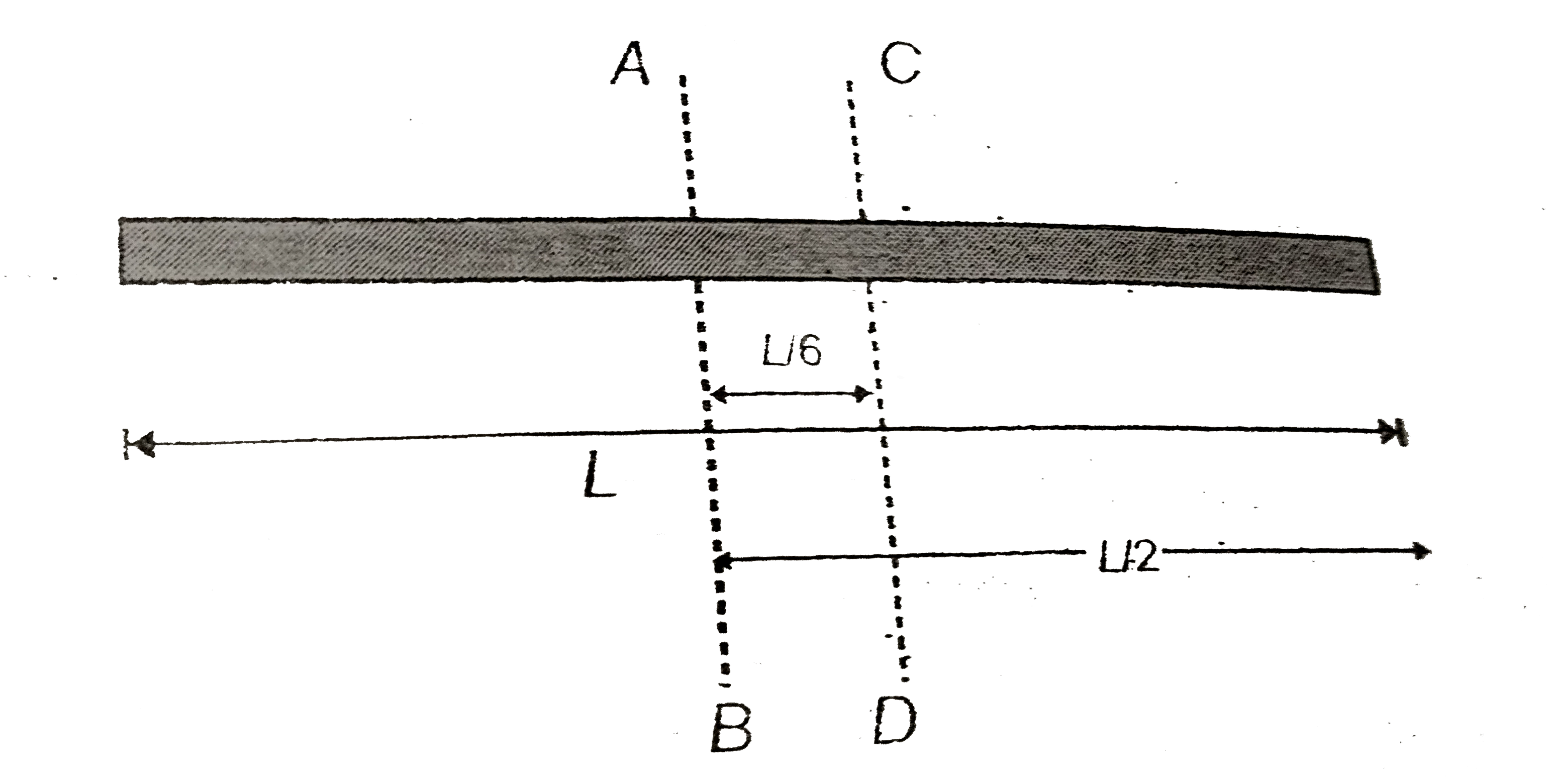Moment of inertia of a uniform rod of length L and mass M, about an axis passing through L/4 from one end and perpendicular to its length is
ML23
(ML2)/12
(ML2)/4
(7ML2)/48
The correct Answer is:B
To find the moment of inertia of a uniform rod of length L and mass M about an axis passing through L4 from one end and perpendicular to its length, we can follow these steps:
Step 1: Identify the Moment of Inertia about the Center of Mass
The moment of inertia ICM of a uniform rod about its center of mass is given by the formula:
ICM=112ML2
Step 2: Determine the Distance from the Center of Mass to the Axis
The center of mass of the rod is located at its midpoint, which is at a distance of L2 from one end (let's call it end A). The axis we are interested in is at a distance of L4 from end A.
To find the distance x from the center of mass to the axis, we calculate:
x=Distance from A to CM−Distance from A to the axis=L2−L4
x=L4
Step 3: Apply the Parallel Axis Theorem
The parallel axis theorem states that the moment of inertia about any axis parallel to the axis through the center of mass is given by:
I=ICM+Md2
where d is the distance between the two axes. In our case, d=x=L4.
Step 4: Substitute Values into the Parallel Axis Theorem
Substituting the values we have:
I=ICM+M(L4)2
I=112ML2+M(L216)
Step 5: Simplify the Expression
Now we need to simplify the expression:
I=112ML2+116ML2
To add these fractions, we need a common denominator. The least common multiple of 12 and 16 is 48. Thus, we convert each term:
I=448ML2+348ML2
I=748ML2
Final Answer
Thus, the moment of inertia of the rod about the specified axis is:
I=748ML2
The moment of inertia ICM of a uniform rod about its center of mass is given by the formula:
ICM=112ML2
The center of mass of the rod is located at its midpoint, which is at a distance of L2 from one end (let's call it end A). The axis we are interested in is at a distance of L4 from end A.
x=Distance from A to CM−Distance from A to the axis=L2−L4
x=L4
The parallel axis theorem states that the moment of inertia about any axis parallel to the axis through the center of mass is given by:
I=ICM+Md2
where d is the distance between the two axes. In our case, d=x=L4.
Substituting the values we have:
I=ICM+M(L4)2
I=112ML2+M(L216)
Now we need to simplify the expression:
I=112ML2+116ML2
To add these fractions, we need a common denominator. The least common multiple of 12 and 16 is 48. Thus, we convert each term:
I=448ML2+348ML2
I=748ML2
Thus, the moment of inertia of the rod about the specified axis is:
I=748ML2
Topper's Solved these Questions
Similar Questions
The moment of inertia of a thin uniform rod of mass M and length L about an axis passing through its mid-point and perpendicular to its length isI0. Its moment of inertia about an axis passing through one of its ends perpendicular to its length is.
View SolutionMoment of inertia of a thin rod of mass m and length l about an axis passing through a point l/4 from one end and perpendicular to the rod is
View Solution
Knowledge Check
The radius of gyration of an uniform rod of length l about an axis passing through one of its ends and perpendicular to its length is.
Al√2Bl3Cl√3Dl2
The moment of inertia of a uniform thin rod of length L and mass M about an axis passing through a point at a distance of L/3 from one of its ends and perpendicular to the rod is
View SolutionCalculate the moment of inertia of a uniform rod of mass M and length l about an axis passing through an end and perpendicular to the rod. The rod can be divided into a number of mass elements along the length of the rod.

View SolutionThe moment of inertia of a thing uniform rod of length L and mass M, about axis CD (as shown in figure) is

View SolutionThe moment of inertia of a uniform rod of length 2l and mass m about an axis xy passing through its centre and inclined at an enable α is

View SolutionMoment of inertia of a cylinder of mass M, length L and radius R about an axis passing through its centre and perpendicular to the axis of the cylinder is I=M(R24+L212). If such a cylinder is to be made for a given mass of a material, the ratio L/R for it to have minimum possible I is :
View SolutionThe moment of inertia of a solid cylinder of mass M, length 2R and radius R about an axis passing through the centre of mass and perpendicular to the axis of the cylinder is I1 and about an axis passing through one end of the cylinder and perpendicular to the axis of cylinder is I2
View Solutionfind the radius of gyration of a rod of mass m and length 2l about an axis passing through one of its ends and perpendicular to its length.
View Solution
